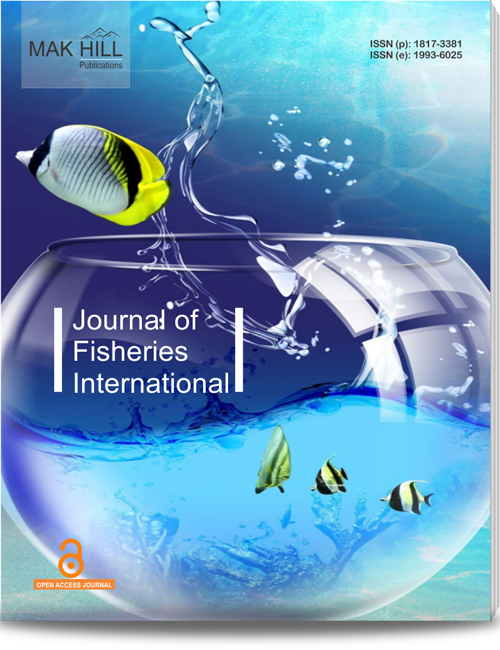
Journal of Fisheries International
ISSN: Online 1993-6025ISSN: Print 1817-3381
Abstract
One of the problems limiting the profitability and competitiveness of the fisheries sector in Oman is the high incidence of losses at the landing sites and other stages in the postharvest marketing chain. Our previous studies indicated that cool-chain management in the Omani fresh fish industry was generally inadequate given that freshly landed fish may be exposed to high air temperatures of over 40 ºC for up 5-7 h duration during retail display in unshaded areas. As a result, losses in both quantity (physical) and quality are an economic problem. In the present study, we modelled the reduction in fresh fish quality based on the decline in value (price) to the customer over the marketing period. For large pelagic fish, downgrading of quality through price reduction is limited to 2-3 days after landing, following which the fish is discarded (waste) or processed into secondary fish products such as maleh. Our findings showed that reduction in fish value due to loss of freshness can reach up to 10-25% after the first day of landing and 19-44% after the second days of landing. Using data on reductions in fresh fish price due to quality loss as perceived by fishers and marketers in the Muscat Governorate, we present regression models on the chronological decline in the Omani tuna value during postharvest handling and marketing at major landing sites. The implications of these findings on postharvest handling and supply chain management of fresh fish in Oman are discussed.
How to cite this article:
M. Saud Al-Jufaili and Linus U. Opara . Status of Fisheries Postharvest Industry in the Sultanate of Oman: Part 3. Regression Models of Quality Loss in Fresh Tuna Fish.
DOI: https://doi.org/10.36478/jfish.2006.141.143
URL: https://www.makhillpublications.co/view-article/1817-3381/jfish.2006.141.143